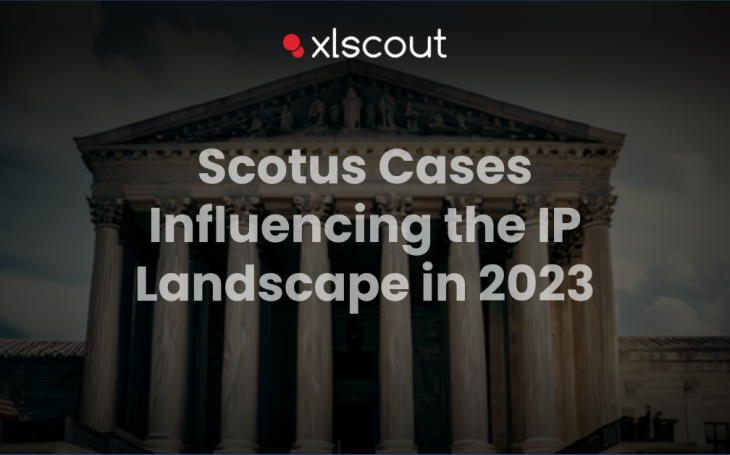
2023 promises to be a pivotal year for IP observers as they await resolutions in a number of legal cases that will have an impact on the IP industry. This year’s SCOTUS docket includes cases involving induced infringement, divided infringement, and the patentability of abstract claims. In recent years, the Supreme Court has come under fire from IP stakeholders for issuing ambiguous and contradictory rulings, which they claim make it difficult for innovators to compete.
Travel Sentry vs. Tropp
Docket No. 22-22
As this case prepares for its potential third appearance before the Supreme Court, the questions raised by Tropp vs. Travel Sentry are all but settled by IP industry observers hoping for the court to demonstrate some consistency on IP matters. Tropp v. Travel Sentry is one of several recent decisions that have altered the IP landscape. The definition of “divided infringement” as defined in Akamai Techs., Inc. v. Limelight Networks, Inc. and the patentability of abstract methods as defined in Alice Corp. v. CLS Bank International are at issue.
A dual-lock system meant to safeguard airport luggage and prevent it from being accessed by anyone other than the TSA (Transportation Security Administration) during security screenings is at the heart of the dispute. David Tropp, the patent holder, has two patents that explain both the mechanical orientation of the locks and the abstract steps airport security would take to achieve their security goals. Travel Sentry is accused of infringing with the assistance of the TSA on the grounds that both parties mutually committed infringement through their patented lock system as well as the abstract methodological approach behind security screening.
Teva Pharmaceuticals USA, Inc. vs. GlaxoSmithKline, LLC
Docket No. 22-37
Several cases involving US drugmakers will be featured in 2023, as they were in 2022. Teva Pharmaceuticals USA vs. GSK and the use of so-called “skinny labels” case is on the Supreme Court’s docket. Skinny labelling is utilized to thwart drug makers’ attempts to delay competition by substituting expiring patents with new ones based on new drug uses. Generic competitors use thin labels to encompass all uses of a drug that is no longer patent-protected.
Receiving subsequent patents in order to maintain monopolistic power has lowered competition in pharmaceutical markets. Generic drug alternative solutions are locked out by patent owners earning novel patents under the guise of handling different situations with the same drug. Modified FDA rules paved the way for the skinny label system, which is used to boost drug industry competition. Skinny labelling is in use since the millennium’s turn, when Congress passed legislation allowing the FDA to use skinny labels.
The case has been ongoing since 2014. It has a $235 million liability judgement issued by the lower circuit court at its heart. It determined that Teva violated existing GSK patents for its drug Coreg, despite the fact that the drug’s original patent expired in 2007.
Teva’s stated use of generic Coreg (treating heart failure, the drug’s original use) is uncontested. Teva was found to have engaged in induced infringement. It is a kind of secondary infringement in which one party “induces” another to commit patent infringement. Those directly marketing and selling Teva’s product included uses currently protected by patents in force.
Apple, Inc. vs. California Institute of Technology
Docket No. 22-203
The Patent Trial and Appeal Board (PTAB) was established in 2012 as a substitute for business method reviews, inter partes reviews, and post-grant reviews. PTAB was created as a result of congressional legislation administered by the Department of Commerce and the USTPO. However, its track record of success is mixed. It was formed primarily to expedite intellectual property cases. The PTAB is accused of effectively establishing a dual legal system for intellectual property. To address this, the court’s estoppel provision prohibits the court from bringing any invalidity argument that it could have justifiably asked the PTAB to rule on in a different court.
Apple, Inc. vs. California Institute of Technology. The central question is whether Apple repeated its invalidity claim, first in the IRB and then in district court. According to Apple, their arguments appeared only during the petition stage of the IRB process, before the actual review. According to CIT, Apple already had its chance under the estoppel rule. Therefore, they could have easily brought the present circuit court invalidity claim before the PTAB. Because the PTAB’s formal review did not involve all of the pre-trial claims, they were never formally reviewed/ruled on. Consequently, opening the door to Apple’s invalidity argument in the parallel district court case. Companies will be hesitant to use the PTAB if it means defending patents in multiple courts.

